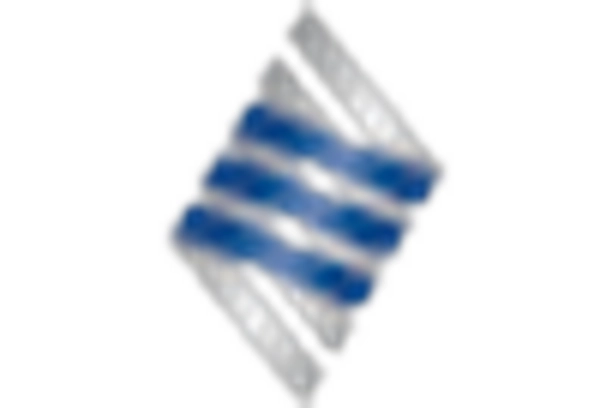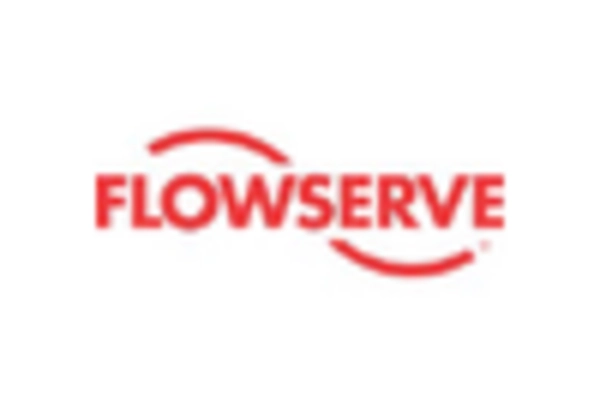Increasing Demand for Oil and Gas
The Choke Valve Market experiences a notable surge in demand driven by the oil and gas sector. As exploration and production activities expand, the need for efficient flow control solutions becomes paramount. In 2025, the oil and gas industry is projected to account for a substantial share of the choke valve market, with estimates suggesting a value exceeding USD 1 billion. This growth is attributed to the rising energy consumption and the necessity for enhanced production efficiency. Choke valves play a critical role in managing the flow of fluids, thereby optimizing extraction processes. Consequently, the increasing demand for oil and gas is likely to propel the Choke Valve Market forward, fostering innovation and technological advancements in valve design and functionality.
Growing Focus on Energy Efficiency
The Choke Valve Market is significantly impacted by the growing focus on energy efficiency across various sectors. Industries are increasingly adopting measures to reduce energy consumption and minimize operational costs. Choke valves play a crucial role in optimizing fluid flow, thereby enhancing energy efficiency in processes such as oil and gas extraction, water management, and chemical processing. In 2025, the market is expected to witness a rise in demand for energy-efficient choke valves that contribute to sustainability goals. This trend is likely to drive innovation in valve technology, leading to the development of products that not only meet performance standards but also align with environmental objectives. As energy efficiency becomes a priority, the Choke Valve Market is positioned to benefit from this shift towards sustainable practices.
Technological Innovations in Valve Design
Technological innovations are reshaping the Choke Valve Market, leading to the development of advanced valve designs that enhance performance and efficiency. Innovations such as smart valves equipped with IoT capabilities are gaining traction, allowing for real-time monitoring and control of fluid flow. In 2025, the market is projected to see a significant increase in the adoption of these technologies, driven by the need for improved operational efficiency and reduced downtime. The integration of automation and data analytics into choke valve systems is likely to optimize performance, reduce maintenance costs, and enhance overall productivity. As industries seek to modernize their operations, the demand for technologically advanced choke valves is expected to rise, positioning the Choke Valve Market at the forefront of industrial innovation.
Regulatory Compliance and Safety Standards
The Choke Valve Market is significantly influenced by stringent regulatory compliance and safety standards. Governments and regulatory bodies worldwide impose regulations to ensure safe operations in industries such as oil and gas, petrochemicals, and water management. Compliance with these regulations necessitates the use of high-quality choke valves that meet safety and performance criteria. In 2025, the market is expected to witness a rise in demand for valves that adhere to these standards, as companies prioritize safety and risk mitigation. This trend not only enhances operational safety but also drives innovation in valve technology, leading to the development of advanced choke valves that offer improved reliability and efficiency. As a result, regulatory compliance is a key driver for the Choke Valve Market, shaping product offerings and market dynamics.
Rising Investments in Infrastructure Projects
The Choke Valve Market is poised for growth due to rising investments in infrastructure projects across various sectors. Governments and private entities are increasingly allocating funds for the development of water supply systems, wastewater treatment facilities, and energy infrastructure. In 2025, the market is anticipated to benefit from these investments, as choke valves are essential components in managing fluid flow within these systems. The expansion of infrastructure not only creates demand for choke valves but also encourages manufacturers to innovate and improve their product offerings. As infrastructure projects continue to proliferate, the Choke Valve Market is likely to experience sustained growth, driven by the need for reliable and efficient flow control solutions.


















Leave a Comment